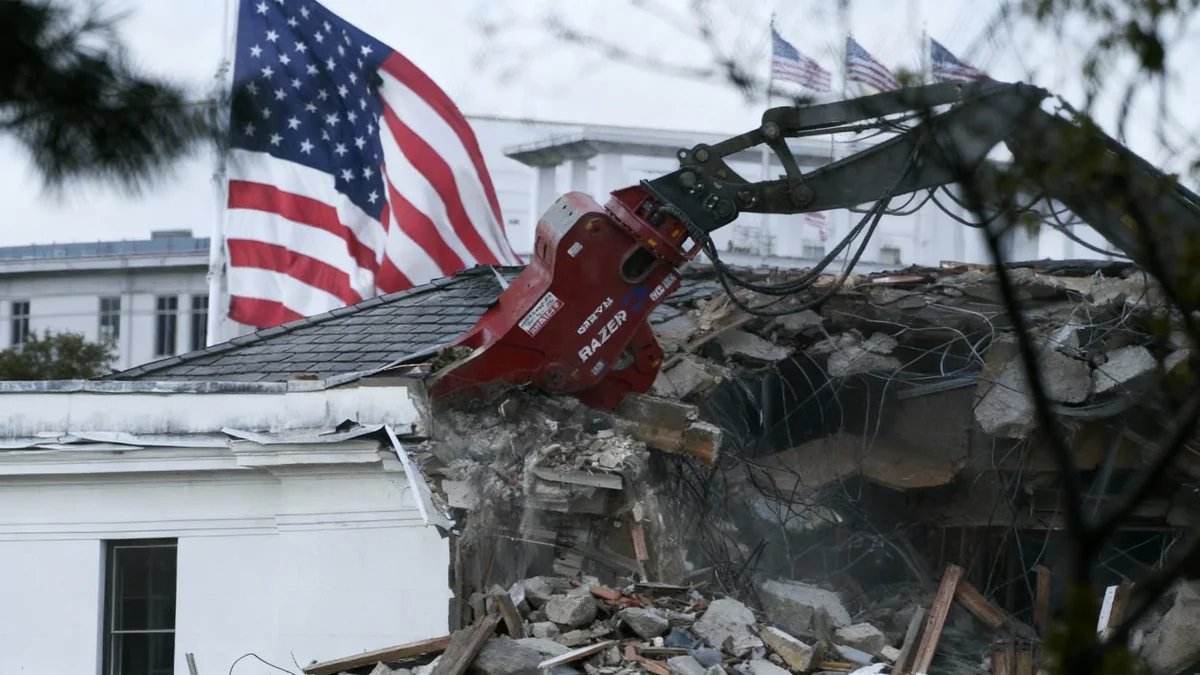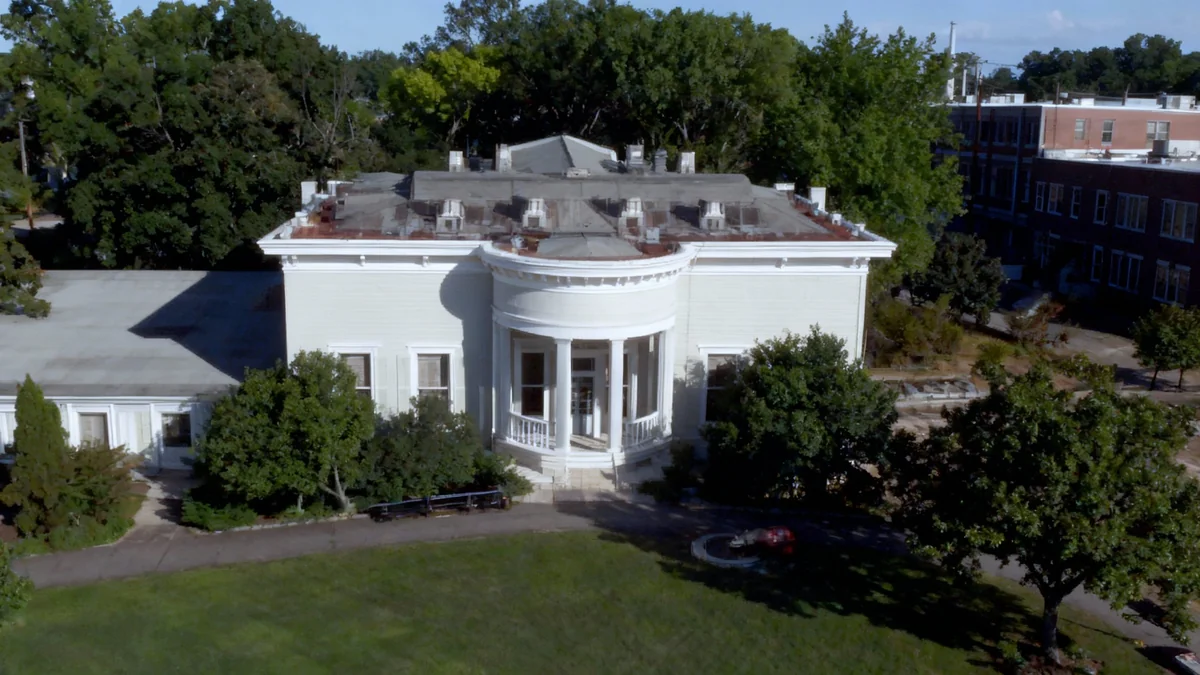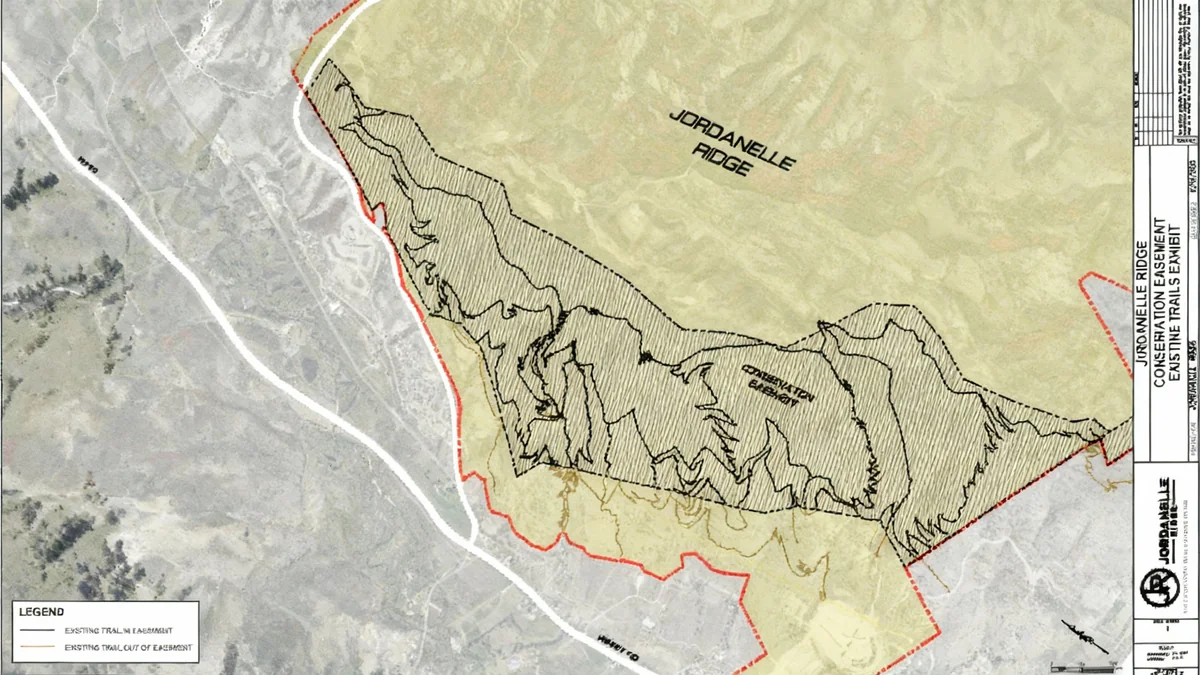The East Wing of the White House, a structure that for decades served as the operational heart for First Ladies and a public gateway to the presidency, has been demolished. The move, initiated to make way for a new ballroom under the Trump administration, removes a space historically significant for its role in elevating the influence of women in American politics.
The demolition, which concluded on October 22, also saw the removal of the Jacqueline Kennedy Garden, the White House movie theater, and the primary public entrance to the complex. The future of office space for the First Lady's staff remains uncertain, raising questions about the role's infrastructure moving forward.
Key Takeaways
- The White House East Wing, built in 1942, has been completely demolished to construct a new ballroom.
- Since 1977, the East Wing housed the Office of the First Lady, providing a dedicated professional space for staff and initiatives.
- Historians view the East Wing as a unique center of female power within the traditionally male-dominated White House.
- The demolition removes the Jacqueline Kennedy Garden and the public entrance, altering the visitor experience.
- No permanent office space for the First Lady has been confirmed in the new plans, leaving staff in temporary locations.
A Century of Evolution
The history of the East Wing began modestly. In 1902, President Theodore Roosevelt commissioned the construction of an East Terrace to serve as an elegant entrance for guests attending social functions. For four decades, it remained a simple entryway to the presidential residence.
Its transformation into a functional office building occurred under President Franklin D. Roosevelt in 1942. Amid the anxieties of World War II, an underground bunker was constructed for presidential protection. The East Wing was built above it, effectively concealing the shelter while adding much-needed office space to the growing White House complex.
From Terrace to Command Center
The structure's initial purpose was purely social, designed by Theodore Roosevelt to manage guest flow. Its expansion in 1942 by FDR was a direct response to wartime security needs, marking a significant shift from a ceremonial space to a strategic one.
The Rise of the First Lady's Office
For much of the 20th century, the First Lady operated with a minimal staff, often working from personal quarters within the White House. MaryAnne Borrelli, a professor of government at Connecticut College, noted that figures like Betty Ford conducted their official business essentially from their bedrooms.
The turning point came during the Kennedy administration. The public and media became fascinated with the young and glamorous First Lady, Jacqueline Kennedy, and her children. According to Elizabeth Rees, a historian at the University of Virginia's Miller Center, this intense interest required a dedicated press operation to manage her activities.
A Project and a Precedent
Jacqueline Kennedy's primary project was the historical restoration of the White House, an initiative that captured national attention. This set a new standard for First Ladies to adopt a signature cause, which in turn required a larger, more professional staff to manage.
"As mass media is on the rise and there's enormous press interest in this young, glamorous first lady... that interest necessitates that there is a press arm for the first lady," explained Rees.
Despite the growing need for space, the First Lady's staff remained scattered throughout the residence. It wasn't until the Ford administration that formal plans were made to centralize their operations.
A Dedicated Space for Influence
In 1977, First Lady Rosalynn Carter became the first to officially establish her office and that of her staff in the East Wing. This move was a landmark moment, professionalizing the role and giving it a physical home within the Executive Office of the President.
"To have a dedicated office space was a key part of the professionalization of the role," said Rees. This physical separation from the West Wing provided a unique environment for women to develop policy and projects away from the male-dominated center of presidential power.
First Ladies' Initiatives Launched from the East Wing
- Rosalynn Carter: Focused on mental health advocacy.
- Laura Bush: Championed national literacy campaigns.
- Michelle Obama: Launched the "Let's Move!" initiative to combat childhood obesity.
- Melania Trump: Promoted the "Be Best" campaign for children's well-being.
In 1978, a new law formalized funding for the First Lady's office, solidifying its status as a professional unit. The East Wing became synonymous with these influential, non-political initiatives that often had a lasting impact on American society.
The Symbolism of Location
While the East Wing provided a crucial space, its location was not without drawbacks. Some insiders viewed it as being isolated from the true center of power, the West Wing, where the Oval Office is located.
Kate Andersen Brower, author of First Women: The Grace & Power of America's Modern First Ladies, described the dynamic bluntly. "The West Wing is the seat of power in the White House. And it's all about proximity, right?" she said. "There's a built-in, Siberia nature to the East Wing."
This perception prompted Hillary Clinton, during her time as First Lady, to take an office in the West Wing to be closer to the policymaking process. Professor Borrelli noted that Clinton initially saw the East Wing as primarily ceremonial but later came to appreciate the power of its symbolism.
An Uncertain Future
The demolition of the East Wing leaves a significant void. The White House has not yet announced if the new ballroom structure will include permanent offices for the First Lady. Melania Trump's staff is currently operating from various temporary offices within the White House complex.
The removal of this historic space is seen by some observers as a diminishment of the First Lady's role. "It has long been a space of female power and a female niche in the White House," Rees stated, highlighting the loss of an environment where women could flourish professionally.
President Trump's decision to build a ballroom is part of a long tradition of presidents leaving their physical mark on the White House, from the Truman Balcony to changes in the Rose Garden. However, this project is unique in its removal of such a large and functionally important structure.
Questions now turn to logistics and legacy. "There's a lot of office space that's now gone. Where are you going to accommodate those people?" Borrelli asked. While the new ballroom could potentially be converted back to office space by a future administration, its immediate purpose alters a fundamental aspect of the White House's operational layout and erases a key chapter in the history of America's First Ladies.





